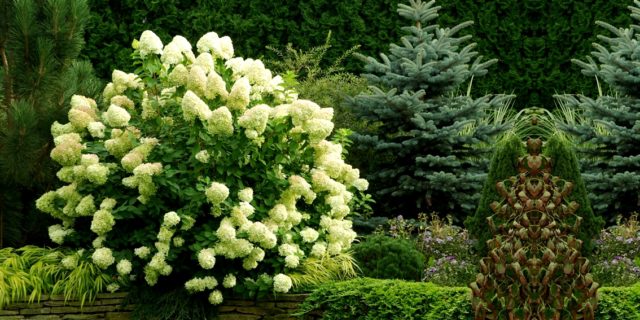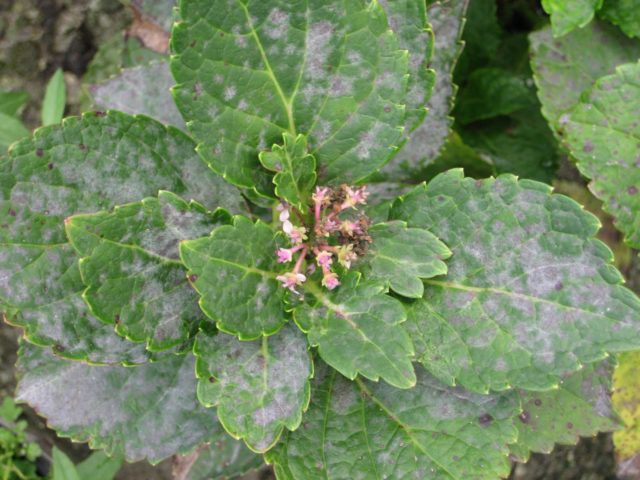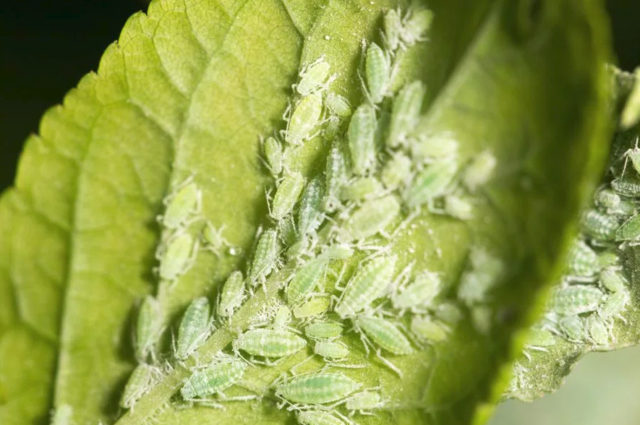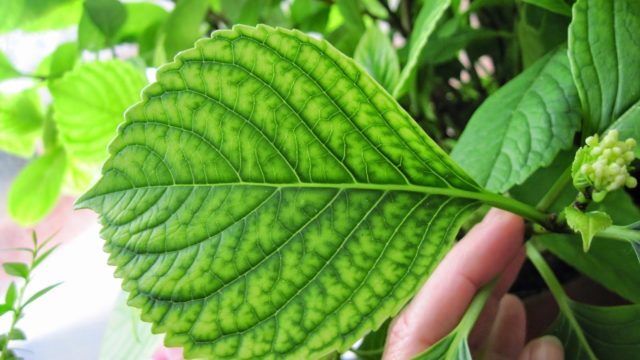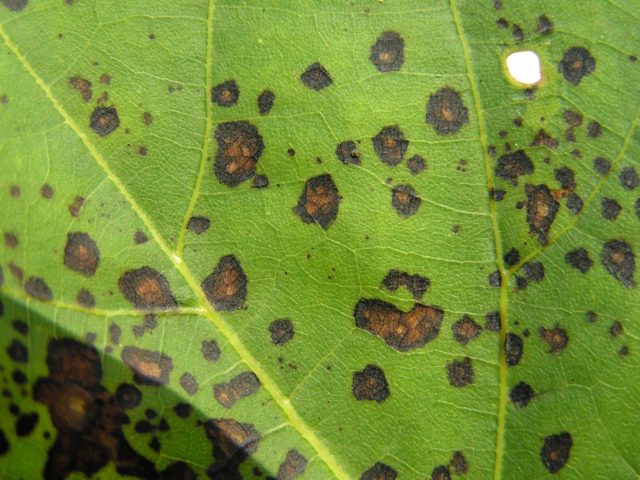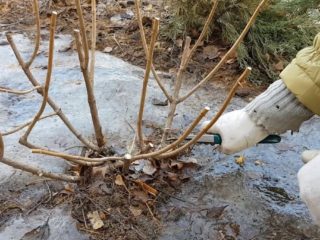Content
Panicle hydrangea is a plant of unusual beauty. It can be grown in flowerpots and in the garden. Thanks to the large selection, you can choose the look you like the most. Hydrangea Big Ben will be a bright decoration for any garden. The plant gained popularity not for its bright flowering, but for the fact that the inflorescences change color throughout the season.
Description of hydrangea Big Ben
Hydrangea Big Ben forms a spreading, symmetrical bush 2.5 m high. In spring, oblong leaves with jagged edges appear on bright burgundy shoots. Large, fragrant, conical inflorescences in the budding phase are colored green, then they acquire a pale pink color, and at the beginning of autumn they become deep pink. Long bloom, from June to September.
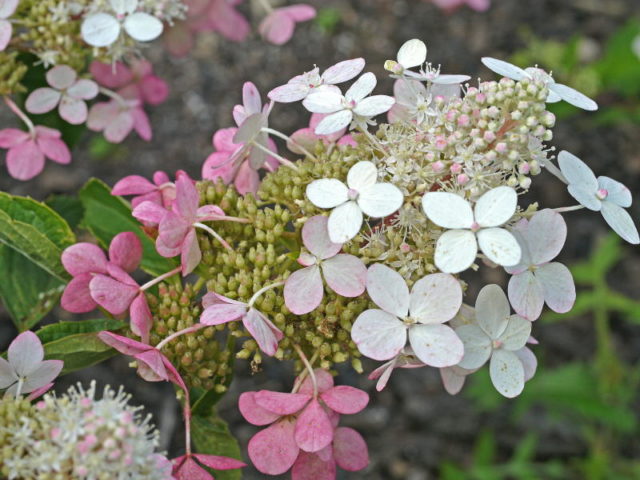
The color of the flower changes as it blooms
Hydrangea Big Ben in landscape design
Hydrangea Big Ben is ideal for creating flower arrangements. When planted next to an artificial reservoir, bright flowers, reflecting in the water, give the site a lively and embossed appearance. Since the shrub lends itself well to modeling, the hydrangea can be turned into a blooming ball or formed into a hedge. The shrub is large, so it will look good in a single planting and next to ornamental shrubs. Hydrangea, planted in a recreation area, will give the place coziness and comfort.
When decorating a personal plot, you need to know which plants the flower is in harmony with:
- with conifers - in combination with spruce crops, the site takes on a Mediterranean look;
The needles will prevent the development of diseases and prevent the appearance of insect pests
- blooming perennials, roses, dahlias, azaleas, look good in combination with Big Ben hydrangea;
- ornamental shrubs in combination with hydrangea give the site a unique look.

Hydrangea goes well with flowering perennials
Winter hardiness of hydrangea Big Ben
Hydrangea paniculata paniculata big ben is a cold-resistant plant. Without shelter, an adult bush can withstand up to -25 ° C. But, in order not to lose the plant, the young bush is covered with mulch and agrofibre within 2 years after planting.
Planting and caring for the Big Ben hydrangea
Hydrangea Big Ben is an unpretentious plant. A fast-growing shrub, the first inflorescences appear 2 years after planting. But in order for it to become a decoration of a personal plot, you need to correctly choose a seedling and know the agrotechnical rules.
When buying, it is important to pay attention to the following points:
- Good survival rate is observed in a seedling at the age of 3-4 years.
- In a quality specimen, the shoots should be brightly colored and have 4-5 healthy buds.
- The root system is healthy, light colored, up to 30 cm long.
- The leaf plate is rich olive in color, without signs of disease.
- For better rooting, cuttings from half a meter in height are suitable.
Selection and preparation of the landing site
Hydrangea Big Ben is a thermophilic plant. Therefore, the landing site should be located in the open sun or in partial shade.The selected area must be protected from gusty winds and drafts.
Hydrangea grows well and develops in slightly acidic, drained soil. With increased acidity during digging, needles, sawdust or peat are introduced into the soil.
The bush grows well and develops in the open sun.
Landing rules
A young seedling is planted in spring and autumn. Spring transfer to the ground is preferable, since during the entire warm period the plant will grow the root system and will leave for the winter, stronger.
After choosing a place and purchasing a seedling, they start planting. In order for it to quickly take root and begin to develop, it is important to follow certain rules:
- Dig a hole 50x50 cm in size.When planting several specimens, the interval between the bushes is maintained at least 2 m.
- A drainage layer is laid at the bottom.
- The excavated soil is diluted with peat, sand and humus. Superphosphate, urea and potassium sulfate are added to the nutrient mixture. Mix everything thoroughly.
- The ½ well is filled with nutrient soil.
- The roots of the seedling are straightened and placed in the center.
- The hole is filled with soil mixture.
- The top layer is tamped, spilled and mulched.
Watering and feeding
Hydrangea Big Ben is a moisture-loving plant, with a lack of moisture, growth and development stops, the inflorescences become smaller and fade. In hot weather, the plant is irrigated 2 times a week. For each bush, about 3 buckets of settled water are consumed. To retain moisture, the trunk circle is covered with foliage, needles or straw.
For long and abundant flowering, Big Ben hydrangea is fed several times a season. Fertilization scheme:
- at the beginning of the growing season - mullein and bird droppings;
- in the budding phase - a mineral complex;
- during the flowering period - manure;
- in the fall, after flowering - phosphorus-potassium fertilizing.
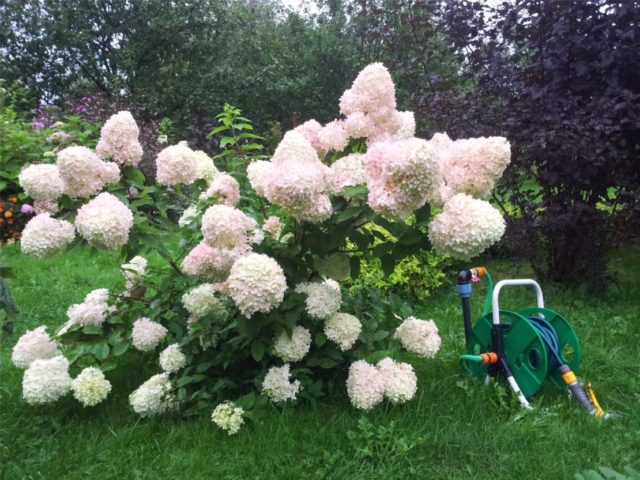
Watering is carried out with warm, settled water
Pruning hydrangea Big Ben
Hydrangea Big Ben responds well to pruning. It is carried out in early spring before sap flow.
An incorrect haircut can lead to a lack of flowering, so you need to know certain rules:
- last year's shoots are shortened by 1/3 of the length;
- dried, not overwintered branches are cut at the root;
- bushes at the age of 5 years need rejuvenation, for this the shoots are shortened, leaving hemp 7-8 cm.
Preparing for winter
Hydrangea Big Ben is a frost-resistant plant, so no shelter is required for the winter. When growing in regions with cold winters, it is better to protect young seedlings for the winter:
- branches are tied and laid on the ground;
- straw or dry foliage is placed on top and covered with spruce branches or agrofibre;
- the shelter is removed in the spring, after the end of the spring frost.
Reproduction
Hydrangea Big Ben can be propagated by seeds, cuttings, branches or dividing the bush. Seed propagation is laborious work, therefore it is not suitable for beginner florists.
Cutting is a simple and effective way. Saplings 10-15 cm in size are cut from a healthy shoot. The planting material is buried at an angle into the nutrient soil and covered with a jar. After rooting, the shelter is removed, the container is rearranged in a bright, warm place. After 3 years, the matured cuttings are moved to a prepared place.
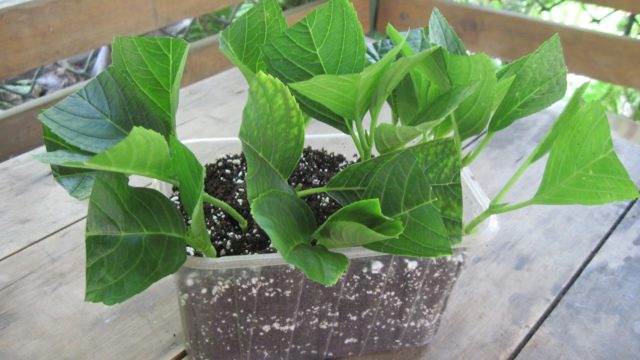
Cuttings are cut in the middle of summer
Taps are not time consuming. The shoot, located near the ground, is laid in a trench, leaving the upper leaves above the ground. Sprinkle with soil, spill and mulch. After a year, the rooted branch is disconnected from the mother bush and planted in a sunny place.
Another way is to divide the bush, during transplantation, the old bush is divided into a certain number of divisions. Each part is kept in a growth stimulator and placed in prepared, fertilized wells.
Diseases and pests
The Big Ben panicle hydrangea is immune to diseases and pests. But if agricultural technology is not followed, the plant can get sick with the following ailments:
- Powdery mildew. The disease manifests itself as a white bloom on the leaves, which can be easily removed with a finger.
You can save the plant with the help of Bordeaux liquid or "Fundazola", the treatment is carried out every 2 weeks
- Aphid. Insect colonies settle on the aboveground part. You can get rid of them with folk remedies (250 g of chopped garlic is insisted for 2 days in a bucket of water). Processing is carried out every 7 days, until the complete disappearance of the pests.
Pests feed on the sap of the plant, as a result, it stops growing and developing
- Chlorosis. The disease can be recognized by the clarification of the leaf plate.
You can help the plant by regularly spraying with the preparation "Chelate" or "Agricola"
- Ring spot. A dangerous disease that gradually destroys the plant. At the initial stage, the leaf plate is covered with necrotic spots. Further, the foliage dries up and falls off.
The disease is not treatable, therefore, so that it does not spread to neighboring crops, the bush is dug up and burned
- Spider mite. Microscopic insects cover the entire aerial part with a thin web. As a result, the plant weakens, there is no flowering.
You can get rid of the pest with broad-spectrum insecticides.
Conclusion
Hydrangea Big Ben is a flowering, unpretentious shrub. Subject to agricultural technology, the plant will delight with long and abundant flowering. In combination with conifers, ornamental shrubs and perennial flowers, hydrangea will transform the site and make it more romantic and cozy.
